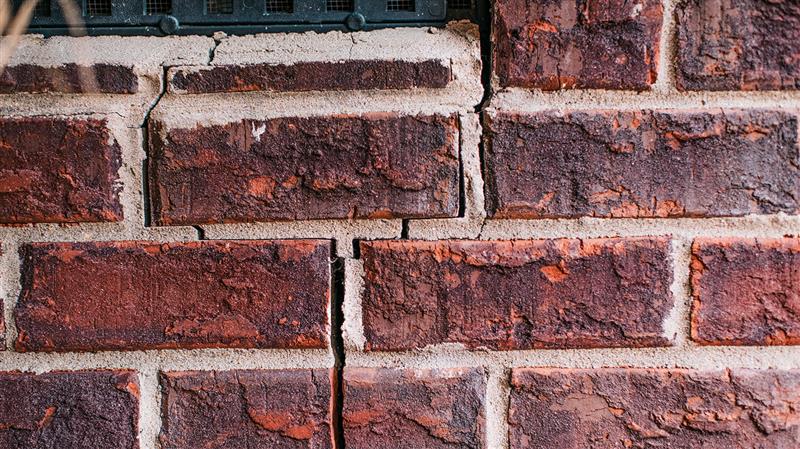Want some peace of mind?
Find a local dealer and help put your worries at ease with our trusted solutions.

Permanently stabilize your foundation walls with helical piers.
Like push piers, helical piers are designed to transfer the weight of your home to load-bearing soil or bedrock, permanently stabilizing your home's foundation. Instead of being driven into the soil by the weight of the home itself, however, helical piers are "screwed" into the soil using a piece of mechanical equipment. This makes them ideal for lighter structures and new construction. And, as with push piers, in many cases helical piers can lift a sunken foundation back to its original position. In addition to being extremely sturdy, Foundation Supportworks helical piers feature a true helix plate that allows for a more accurate torque-to-capacity reading. This means an installer knows when a pier is driven deep enough to find competent soil. With another manufacturer's helical pier, the installer may stop too soon due to an inaccurate torque reading, and your foundation may sink further in the future.
Helical Piers System Advantages
Won't add weight to the problem soil or crack under pressure.
Galvanized system will not rust.
Round shaft and external sleeve prevent bending.
Suitable for both heavy and light loads.
Quick installation and minimal disturbance.
Below-grade solution is concealed from sight.
Helical Piers FAQs
Helical piers are a type of steel foundation pier that have one or more helix-shaped blades welded to the lower section of the pier shaft. They are advanced deep into the soil with the application of torque (a twisting force). Helical piers come in a wide range of sizes and are used in both residential and commercial applications. They are used to support new construction when the near-surface soil conditions are known to be unsuitable or inadequate to support the structure. Helical piers can also be used to stabilize or lift existing structures that are showing signs of settlement.
By far, the answer is yes. The short, blunt, concrete cylinders that are often used in residential foundation repair so often do not achieve the depth needed to perform over time. They are often installed at a lower cost and can sometimes provide temporary improvement to a settled foundation, but since they typically go only a few feet into the ground, they commonly do not penetrate below the layers of soil that created the problem in the first place and symptoms of settlement often return. Helical piers achieve much greater depths and therefore are far more reliable.
The equipment used to install helical piers such as excavators, hydraulic drive heads, and concrete tools would put it outside the capabilities of the typical do-it-yourselfer.
Although nothing lasts forever, the service life of a helical pile will likely extend beyond the expected 50-70 year lifespan of your home. Helical piers provide such long-lasting and high-quality support that a reputable foundation repair contractor will offer a 25-year warranty that can be transferred to a future homeowner.
The answer to that can get a little technical, but the capacity of a helical pier will be directly related to the amount of torque (rotational force) that is used to install it. Installation torque is what is used to measure the strength of soil that is being penetrated by the plates at the tip of the helical pier. A useful analogy to understand this would be to think about using the same type of wood screw to fasten to blocks made of different materials. If you had blocks of Styrofoam, cheddar cheese, pine, and oak, you'd expect the stronger materials would take more effort to fasten the screw to than the weaker materials. You'd also expect the screws that took more effort would be able to hold more load. Helical piles operate in a very similar fashion, and when they are installed with enough torque, they can support tens of thousands of pounds.
For an existing home, a helical pier installation first requires removing the soil around the foundation to expose the foundation footings. Concrete tools are then used to notch and prepare the footing for the bracket that will connect the helical pier to the foundation. The helical pier is then torqued or "screwed" into the ground until it reaches the required depth and level of resistance. Once all the piers are installed and secured underneath the foundation, the weight of the structure is transferred to the helical piers to stabilize or lift the home.
25-year warranty. Guaranteed.
The helical piers come with a 25-year warranty against manufacturing defects.
Why you need it. After a home is constructed, changes in the surrounding soil are the primary cause of foundation settlement. Extreme moisture changes, such as drought or over saturation, along with poorly compacted fill soils, create soil movement. That movement shifts and settles your home, causing cracked walls, uneven floors and a sinking foundation.
Related Content

What causes foundation problems?
Foundation and concrete failure are common and so are the reasons behind the failure.
Learn What
Why fix your foundation problems?
Your foundation problems will never be cheaper to fix than they are today.
Learn WhyFoundation & concrete problems don't get better with time, they get better with us.
Find a foundation repair or concrete company near you to fix them, so you can breathe easy and sleep well tonight. Our specialists will deliver the most precise and competitive foundation repair estimate available.
Looking for a price? Get a no cost, no obligation free estimate.